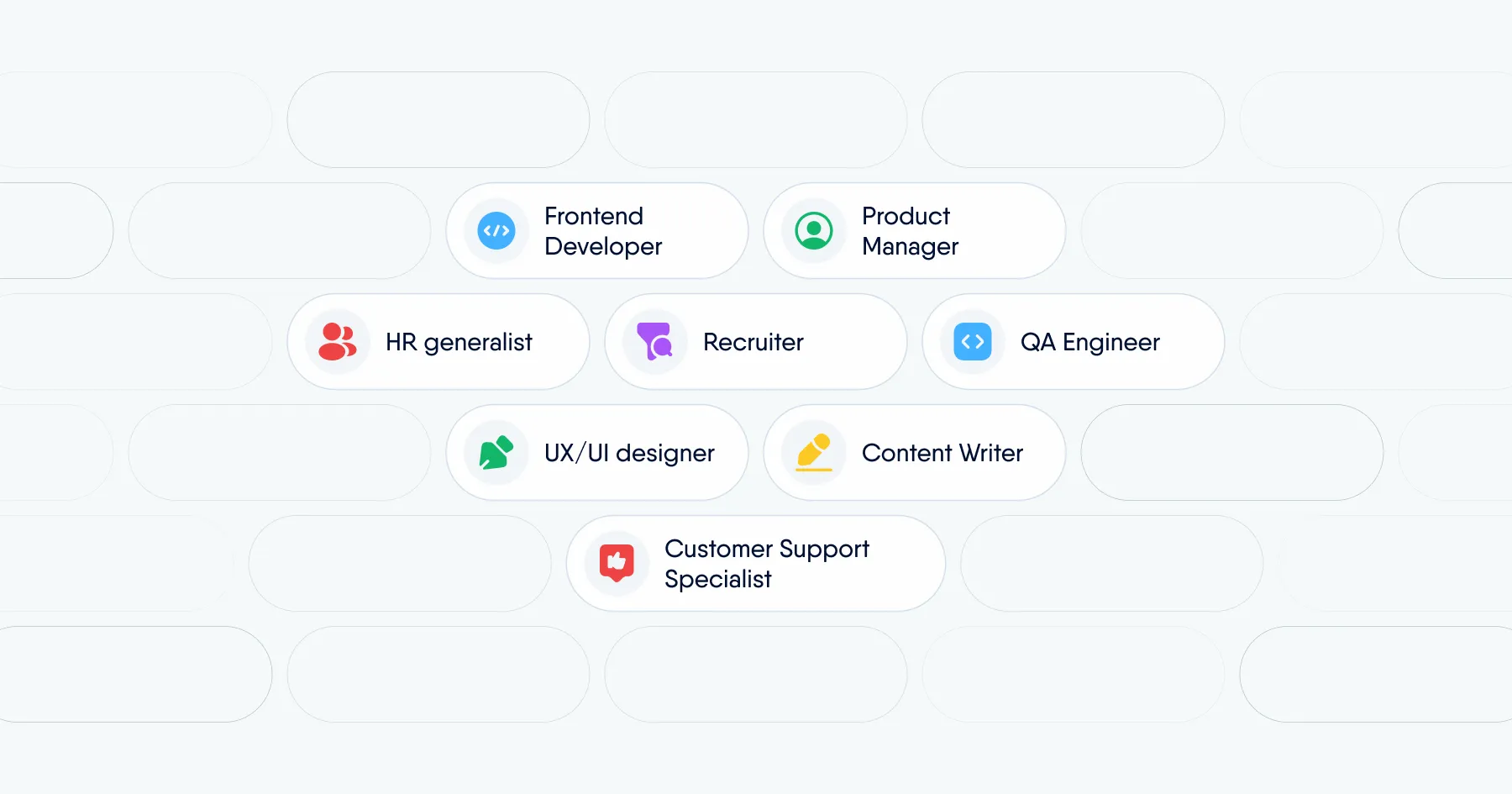Sensitivity training
What does sensitivity mean in the HR context?
What does sensitivity mean in the HR context?
Sensitivity in HR is the ability to recognize and understand employees’ emotions, needs, and perspectives and to respond appropriately in everyday interactions. It includes:
- empathy – the ability to understand others’ emotions and situations without judgment;
- attentiveness – the ability to listen and ask questions in a way that encourages openness;
- openness to diversity – recognizing and accepting different cultures, personalities, and generations;
- delicacy in difficult situations – for example, during conversations about layoffs, performance reviews, or conflict resolution.
What is sensitivity training?
Sensitivity training is a type of soft skills development program that helps people notice differences between individuals and treat them with respect. It usually takes the form of workshops based on exercises, discussions, and simulations that encourage self-reflection and help build empathy. Depending on a company’s needs, training may last a few hours, take place as a full-day workshop, or unfold as a series of sessions over several weeks.
The goal is to increase participants’ awareness of their own attitudes while improving communication and collaboration in diverse teams. During training, participants learn about automatic judgments and stereotypes that may influence decisions, and they practice using inclusive language. Sessions also cover constructive ways of responding in conflict situations and strategies for reducing tension.
Why sensitivity matters in the workplace
Sensitivity in the workplace:
- builds trust and loyalty – employees feel heard and understood;
- strengthens collaboration – it makes it easier to understand different perspectives and resolve conflicts;
- supports employee well-being – it helps identify signs of stress, burnout, or overload earlier;
- boosts team motivation – employees are more engaged when they know their emotions and needs are acknowledged;
- fosters inclusivity – it allows different working styles, cultures, and experiences to be valued.
When employees feel safe and seen, the organization benefits with stronger performance.
What’s the difference between DEI training and sensitivity training?
Sensitivity training focuses on the individual – developing empathy, attentiveness, and mindful communication in everyday interactions. DEI (Diversity, Equity & Inclusion) programs, on the other hand, cover a broader scope: policies, processes, and organizational structures. The two approaches complement each other – sensitivity training strengthens the attitudes of employees and managers, while DEI embeds those values into the company’s systems.
How sensitivity training supports HR processes
The skills developed during sensitivity training benefit all participants – employees, managers, and HR teams.
- In hiring, they help reduce the impact of unconscious bias among recruiters.
- In onboarding, they help create an atmosphere of openness, helping new employees adapt more quickly.
- In performance reviews, they help managers deliver feedback in a supportive and motivating way.
- In learning and development, they enable HR teams to better align programs with organizational needs by increasing awareness of differences in work and learning styles.
- In diversity initiatives, they strengthen employees’ open-minded attitudes and reduce stereotypes, supporting the development of an inclusive culture.
- In team dynamics, they develop the ability to view situations from different perspectives, reducing the risk of conflict escalation and promoting constructive solutions.
- For managers, they support empathetic communication and prepare leaders for difficult conversations.
How sensitivity training impacts the organization
The impact of sensitivity training goes beyond individual skill-building – it can be seen across the entire organization:
- Building an inclusive culture. Sensitivity supports creating an environment where diversity becomes an asset rather than a barrier. This reduces turnover, strengthens the sense of belonging, and facilitates the implementation of DEI policies.
- Higher morale and productivity. Organizations where people feel respected achieve higher levels of engagement and efficiency while experiencing lower absenteeism rates.
- Attracting and retaining talent. Candidates increasingly evaluate employers based on their approach to diversity and workplace culture. Organizations that foster sensitivity in their teams become more competitive in the job market and reduce turnover costs.
- Fewer escalating conflicts. The ability to recognize different perspectives reduces disputes requiring HR or leadership intervention, lowering costs associated with managing personnel crises.
- Better team relationships. Sensitivity supports collaboration across divisions and improves organizational climate, as reflected in employee satisfaction survey results.
- Stronger client relationships. Organizations that practice sensitivity in internal interactions are better equipped to build strong, partnership-based relationships with clients and business partners. This directly strengthens their reputation.
Challenges with sensitivity training implementation
Sensitivity training is a valuable HR tool, but implementing it often presents significant hurdles. One of the most common issues is resistance to the concept itself. This emerges particularly when employees view it as an attempt to impose specific viewpoints rather than an opportunity for development. Without clear communication about objectives and expected outcomes, some participants approach the training with skepticism, treating attendance as a check-the-box exercise.
The workshop atmosphere plays a critical role. Sensitivity training can be ineffective in organizations lacking basic anti-discrimination policies and ethical procedures. When participants don’t feel psychologically safe, they limit themselves to brief, guarded responses. As a result, discussions remain superficial, and more challenging topics – such as bias or experiences with discrimination – are sidestepped entirely.
Such programs also often lose out to competing business priorities. Time constraints, limited budgets, or lack of access to qualified facilitators mean training gets rushed and stays too generic. Instead of addressing real workplace scenarios specific to the company, programs rely on universal case studies that participants perceive as impractical. Under these conditions, applying new skills in daily work becomes nearly impossible.
Another significant challenge is skipping evaluation and follow-up activities. A one-off session functions more as a symbolic gesture than a true tool for change. Without ongoing monitoring and continued support, new attitudes and skills have little chance to take root. The entire investment – both organizational and individual – dissipates within weeks, and the training falls short of HR’s strategic goals.
How to maximize the effectiveness of sensitivity training in your organization
The effectiveness of sensitivity training largely depends on how it is prepared and embedded within your organization’s context. To achieve lasting results, focus on these key elements:
Secure leadership buy-in, as managers’ attitudes often determine whether employees embrace the training and apply it in practice.
Customize the content to your company’s context so the program addresses real organizational challenges. This helps participants see its direct relevance to their work.
Choose engaging formats such as workshops, simulations, or case studies. These are more impactful than theoretical lectures and give participants the chance to practice new skills.
Provide supporting materials, for example in your company’s knowledge base. These could include checklists, guides, or recordings.
Create space for dialogue and experience-sharing to reinforce the learning process. You can also offer employees tools for anonymous reporting of violations, which builds a stronger sense of safety.
Conduct ongoing evaluation by combining surveys, one-on-one meetings, and HR data analysis to understand the training’s impact and define next steps.
Summary
Sensitivity training helps organizations build a culture grounded in respect, empathy, and appreciation for diversity. Delivered through interactive workshops with group discussions and role-play, it develops communication skills, reduces conflict, and fosters a work environment where everyone feels heard and valued.

